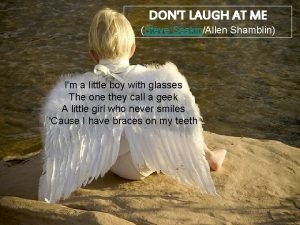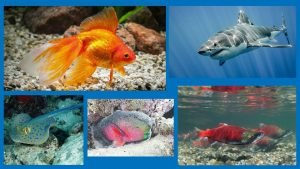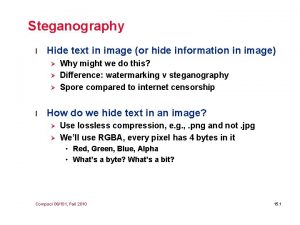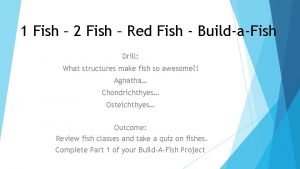The dead fish How to handle Dont hide










- Slides: 10

The dead fish! How to handle? Dont hide your problems Expose them and use them constructive

Torsten Snogdal Boutrup Veterinarian Aquapri Denmark A/S Cand. Med. Vet. : 2004 Ph. D. : 2007 Field practitioner: 2007 -2009 Aquasearch Vet Fish health diagnostics and research: 2009 -2015 Danish National Veterinary Institute

Problems in a stable environment – what to do? • Can you have problems in a microbiological stable system? - Yes! • Should you in the name of diversity rely on your stablility to deal with the problems? - No!

The RAS as an organism • A RAS is more than an ecosystem • You need to manage both the system • And the single units especially fish tank

• Problems can relate to: – Pathogens • Specific • Opportunistic – General system management • Biological • Physcal/chemical – Accidents

Bacterial gill disease Acute Clinical signs of intoxication, fish examination - gill infection. In the microscope uniform bacterial growth. This relate to single tank problems, mainly spilled feed. Stop feeding evaluate stressors, correct and treat the fish. Rarely spreads to other tanks unless they are also stressed.

Bacterial gill disease Acute Clinical signs like in previous slide. But often with debris in the gill mucus. Microscopic a variety of bacterial types + eventually protozoan, small arthropods and nematodes. Spillover of water from the water treatment, especially denitrification. Thorough examine filter handling procedures, and system errors. Stop feeding, treat affected tanks, eventually all tanks as precaution. Often several days treatment at a level fish can tolerate

Treatment in RAS • Peracetic acid – Potent, but need good treatment procedures to get adecuate treatment concentrations in substatial time. • • Hydrogenperoxide Chloramin Formaldehyde Salt

Treatment in RAS - Side effects • Fish: Acute or chronic – Always start in the low dosage range, in a few tanks. Good idea to get idea of dosage level in your system before you get problems. • Filter: Ammonia, NO 2 – Rarely a problem unless treatment with high dosages directly into the filter, or very immature filters. • System: Change in equilibrium – Normally a good thing if you can treat – change and let the system get back in balance again

The clusterfuck of pathogens
 One fish two fish red fish blue fish ride
One fish two fish red fish blue fish ride Dont ask dont tell political cartoon
Dont ask dont tell political cartoon Dont laugh at me dont call me names
Dont laugh at me dont call me names One fish, two fish, blowfish, blue fish
One fish, two fish, blowfish, blue fish Characteristics of fish
Characteristics of fish Juan soriano la niña muerta; the dead girl; dead infant
Juan soriano la niña muerta; the dead girl; dead infant Mason handshake
Mason handshake Ernie gave bert dead fish
Ernie gave bert dead fish Fish reproduction
Fish reproduction Bony vs cartilaginous fish
Bony vs cartilaginous fish A big fish swims up and swallows a small fish at rest
A big fish swims up and swallows a small fish at rest


















